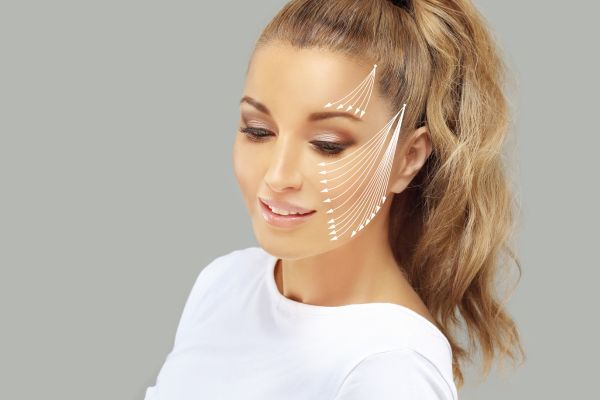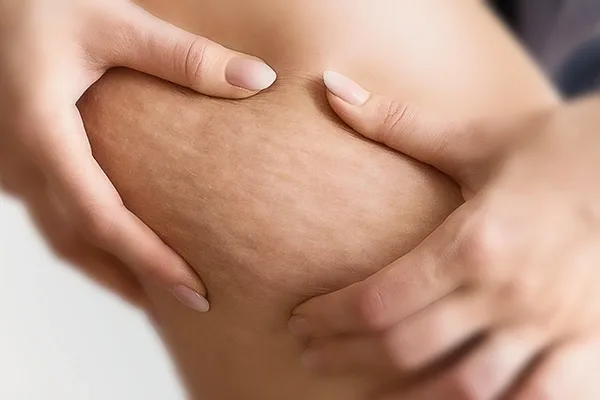Which Is Better?Filler or Thread Lift?
If you’re looking to instantly plump up your lips and smooth out wrinkles, consider dermal fillers. Their results may last for up to a year. Thread lifts, on the other hand, lift sagging skin and stimulate collagen production in a more gradual but more permanent way.
From cryogenic freezing to ‘young’ blood transfusions, digital consciousness, and senolytics, zealous billionaires have been faithful in the pursuit of discovering new ways to prolong the human lifespan. Although science has yet to concede to all their desires, it has made it possible for everyone to dampen the effects of aging without having to fork out billion-dollar sums or undergo surgery. In this blog post, we consider two methods at the forefront of this revolution: dermal fillers and thread lifts, observing how their differences across several metrics can help you make informed choices on which is best suited for your needs.

Dermal fillers and thread lifts: A brief overview
One of the effects of aging is the slowing down of natural metabolic processes that produce vital acids and proteins responsible for a luscious skin appearance. This metabolic retraction eventually leads to the loss of facial volume, apparent facial dryness, formation of wrinkles, fine lines, sagging, etc.
Dermal fillers and thread lifts are both aesthetic enhancements that mirror anti-aging cosmetic treatments to return that youthful look that is ever so desired. Both fillers and lifts have been designed to tackle these effects by strategically volumizing and propping up areas of interest to provide similar benefits to a surgical facelift without the associated downtime.
Let’s dive deeper into how each method works and their differences.
Dermal filler
The dermal filler is a non-invasive skin rejuvenation method where biocompatible ‘clear gel’ injectables are driven to specific facial areas to add volume, fill in hollows/wrinkles, and enhance facial contours. The administered injectables contain the oft-less produced hyaluronic acid (the body produces less of this as one grows) that hydrates the skin and increases the moisture attraction and retention rate. It may also contain lidocaine, a pain-numbing agent, that further reduces the already minimal pain associated with the procedure.
Over 2.7 million dermal filler procedures were performed in 2019 alone – American Society of Plastic Surgeons
Dermal filling typically takes less than 20 minutes with almost immediate results that may last for a few months to over a year, depending on the type of filler used.
Thread lift
The thread lift is a slightly more invasive skin rejuvenation option that involves the creation of several small incisions, from where medical-grade threads (often polydioxanone) are inserted using a cannula tube. The threads, after insertion, are expertly manipulated to pull the skin and induce a firmer appearance.
The procedure was recently popularized by the actress and influencer Gwyneth Paltrow (albeit with a method that used the more prone-to-infection sutures rather than threads).
Thread lifting stimulates and enhances the natural production of collagen in the body. Collagen is the most abundant protein in the human body, constituting 30% of total proteins, and has a massive significance on skin quality as it:
- Helps new skin cells grow
- Facilitates the replacement of dead skin
- Promotes the skin’s structural elasticity and strength
- Enhances skin hydration
And although the threads will eventually dissolve in a matter of months, collagen production can continue unabated for up to a year afterward. The result is an initially subtle ‘lift’ that progressively becomes better and more natural-looking over time.
Differences between dermal fillers and thread lifts, and their specific applications

What it does
DF: Dermal fillers fill – adding softness and volume to the skin.
TL: Thread lifters lift – raising sagging skin, reducing lines and wrinkles
The immediacy of results
DF: Results are more immediate, making targeted (re)adjustments and tweaks a possibility until exact results are achieved
TL: Results begin to show after 4-6 weeks when collagen production has driven up, and although progressively becomes better, still creates a ‘wait and see’ scenario
Durability
DF: Effects can last for up to 9 months to just over a year, depending on the amount of filler used. After ‘wear out’, the dermal fillers may need to be refurbished.
TL: Effects can last several years, depending on the patient’s age, skin condition, and the speed of bodily thread absorption.
Simplicity
DF: Dermal fillers are relatively straightforward to administer
TL: Molding and shaping the thread is a more intricate procedure
The pain of procedure
DF: Pain is slight, and even then, it is subsidized by the filler contents and in some cases, topical anesthesia.
TL: It hurts significantly more than dermal fillers and pain may be experienced even with local anesthesia. Bruising and swelling in and around the area of the incision are also likely to occur.
Cost
DF: Relatively cheap, however, the costs may accumulate over time because of the short-lasting nature of the results
TL: When singular procedures are compared, more expensive than the dermal fillers.
Best areas for use
DF: Ideal for the temple, lips, and marionette lines
TL: Ideal for the midface, neck, nose, and eyebrow
Cost of error
DF: The most common error with the procedure is the accidental injection of the filler into the blood vessels which can lead to flow blockage and tissue death if the filler material is incompatible.
TL: PDO threads are bio-absorbable which means the body can easily break them down.
After-care precautions
DF: After-care precautions are less stringent and may be limited to the avoidance of swimming and intense workouts.
TL: Along with intense workouts, patients may also be required to take up specific sleeping positions, abstain from sexual activity, avoid the sun/make-up, and certain medications.
Potential side effects
DF: Although extremely rare, the dermal filler material can trigger allergic reactions. Moreover, filler migration may also occur when the filler moves away from the intended site. Irregularities, ‘overfilled ’lumpiness, and infection are some of the other downsides that can occur.
TL: Besides the bruising pain/swelling, thread lifts can create facial asymmetry (where the shape of the face becomes irregular and tilted to one side). The lifting effect may also cause unintended dimples to appear for up to 2 weeks after the procedure. Infection, if unsterilized incision materials are used, is also a possibility.
Conclusion
Although dermal fillers and thread lifts are both viable methods to enhance skin appearance, we suggest you book a consultation and allow an expert practitioner to examine your skin condition, anatomy, and age, before settling on a particular choice. Expert treatment and after-care will also reduce the risk of complications and side effects affected by each procedure.
Yes, fillers are designed to fill while lifters are designed to lift, and the best results are achieved when each is used for its designated purpose. But more often than not, aesthetic experts will proffer a combination of both methods to allow for a personalized treatment approach that addresses all areas of concern and increases the quality of the results.






